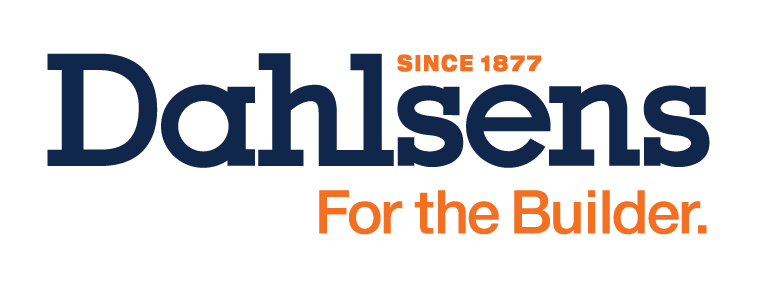Fibre cement cladding is one of the easiest and most cost-effective ways to finish a building project. It’s extremely versatile, available in a range of smooth, textured or patterned surfaces, and stands out for its ability to mimic other materials like wood or stone. It’s resistant to fire, moisture, pests, and rot, and is very low maintenance. As a result, Fibre cement wall cladding is the sustainable option that lasts many years. An excellent choice for both traditional and modern building designs.
Now available in a range of stylish cladding options such as weatherboards, vertical and horizontal groove systems and textured and rendered finishes, it is a popular choice for clients and builders alike. Fibre cement is considered to be an extremely strong and durable product which is easy to install and resistant to fire, moisture and termites.
Our fibre cement cladding suppliers
Dahlsens is proud to partner with leading fibre cement cladding suppliers James Hardie and Cemintel.
Explore our fibre cement cladding styles
Fibre cement sheets are made from sand, cement and cellulose fibre and offer excellent protection against moisture, wind, and fire. Walls finished with cement fibre cladding are also extremely low maintenance and easy to install. For a strong, insulating, and environmentally friendly material in a range of architectural designs, fibre cement cladding is the perfect solution.
Weatherboard fibre cement cladding
One of the most popular fibre cement wall claddings is a modern weatherboard. Unlike timber, it’s non-combustible and resistant to shrinking or swelling, is available in a variety of widths, and slots into place with concealed fixings. Fibre cement weatherboard cladding can be used on any upper or lower-level exterior wall – or interior feature wall – and is pre-primed to hold paint longer.
Vertical fibre cement cladding
For a bold, contemporary aesthetic with wide grooves and a smooth, minimalist finish, vertical fibre cement cladding creates a dynamic look that wraps around the entire building or highlights feature walls. Installation is simple and fast with the direct fix method, and panels may be nailed into timber or screwed into steel framing. Standard lengths suit common wall heights, which minimises cutting and wastage.
Horizontal fibre cement cladding
Horizontal panel orientation creates a sense of width and stability, balancing the visual proportions of buildings and adding a sense of solidity to façades. Neutral colours create a sleek and contemporary appearance that doesn’t detract from the building’s architectural style, and a ventilated cavity behind panelling keeps buildings dry and free of moisture.
Groove systems
Grooved cladding adds textural interest and direction to sheer modern façades. Both horizontal and vertical fibre cement cladding are attached using a simple tongue and groove system that fits panels neatly into place with concealed fixings. Grooves create subtle shadow lines, adding depth and dimension to façades, accentuating the architectural design.
Key advantages of fibre cement cladding
- Lightweight
- Fire resistant and non-combustible
- Moisture resistant
- Cost effective
- Termite resistant
- Strong and durable
- Pre-finished options available from Cemintel
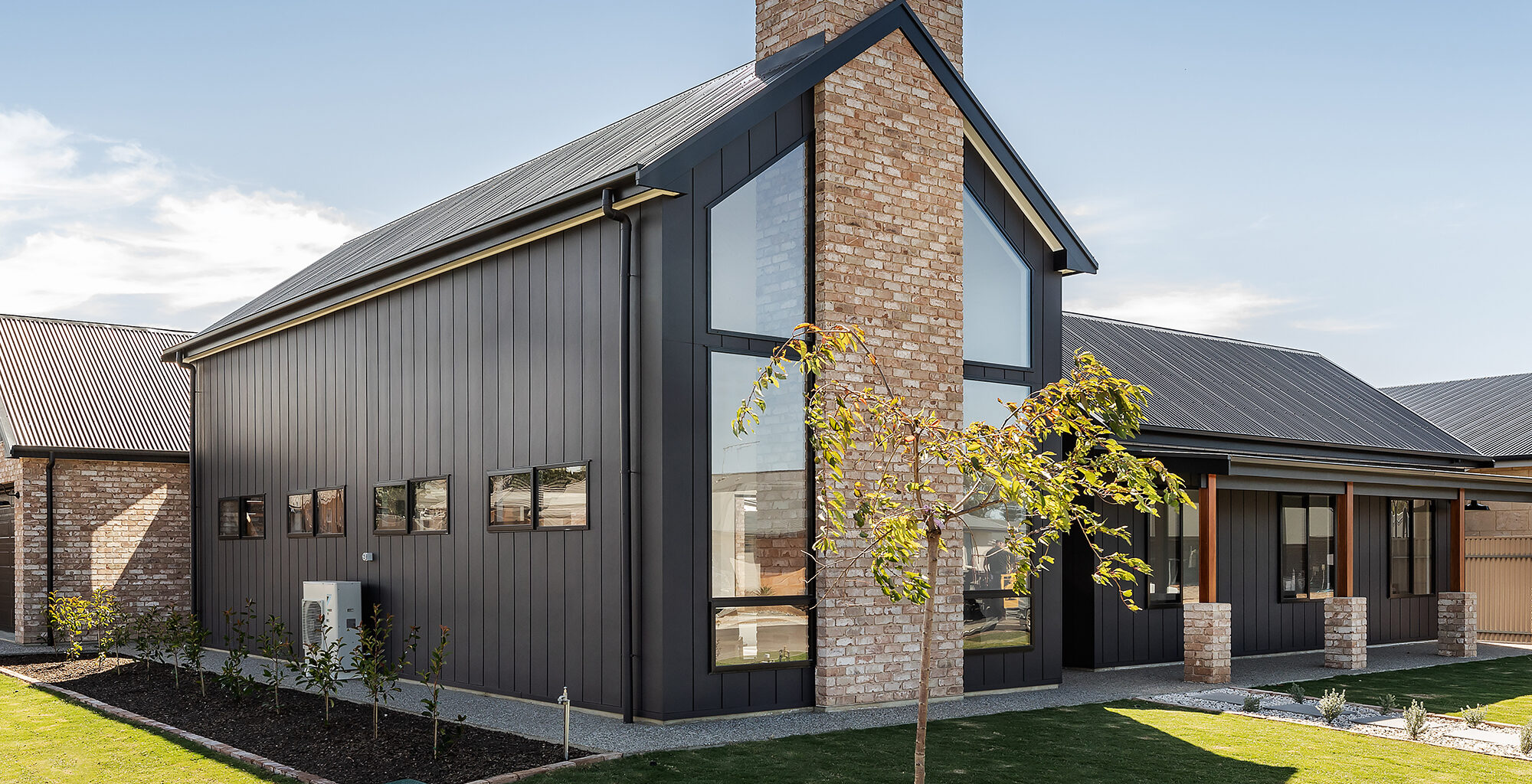
Space saving solution
Favoured for its strong but thin profile, fibre cement is ideal for builds where you’d like to minimise the footprint of external walls on your floor-plan.
For reference, brick veneer can add approximately 160mm to the wall thickness of a build, while the James Hardie Matrix Cladding (which uses the cavity construction installation method) only adds 27mm to the walls of your build.
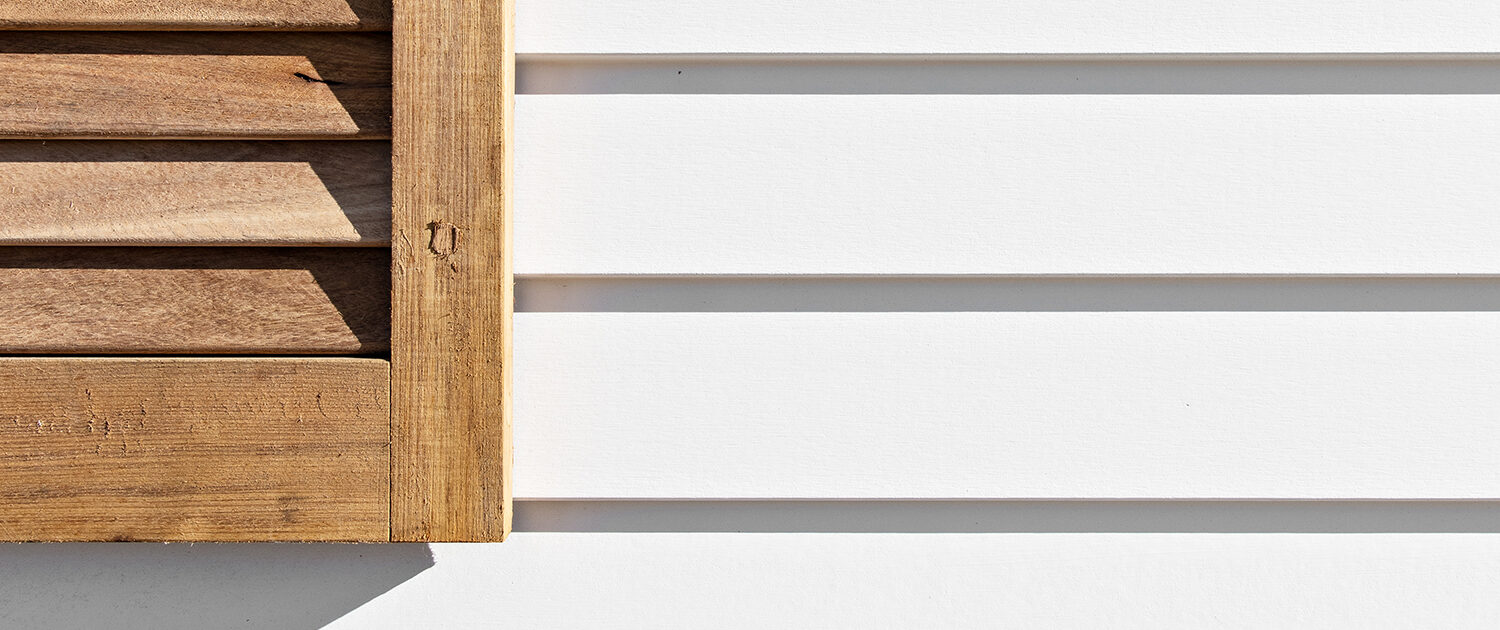
Benefits of choosing our fibre cement cladding
Favoured for its strong but thin profile, fibre cement cladding is ideal for builds where you’d like to minimise the width of external walls. Dahlsens have an extensive range of fibre cement cladding products offering durability, energy efficiency, and modern style. We’re proud to partner with leading brands, James Hardie and Cemintel, to supply industry-leading products and support for your next project.
Durability and maintenance
All our fibre cement wall cladding products are guaranteed for 10 to 25 years with only minimal ongoing maintenance. Tough, durable and fireproof cladding systems are resistant to rotting and moisture damage, and can be painted light or dark colours without the risk of shrinking, swelling, or cracking in the heat. Cemintel’s Territory board also has a Nichigard© stain resistant self-cleaning coating, and uses Platinum Coating Technology to protect against UV damage and fade.
Energy efficiency
Light-coloured cement fibre cladding reflects sunlight, helping to keep buildings cooler in warm climates and reducing their energy consumption. Ventilation space behind wall panels creates circulation that lets buildings breathe, while durable, weatherproof panels prevent moisture infiltration, air leaks, and drafts. When installed with an insulating material, or as part of a comprehensive building envelope system, fibre cement wall cladding helps improve thermal performance and reduce heat transfer.
Fibre Cement products available at Dahlsens
Browse our suppliers industry-leading products or chat to the team at Dahlsens today to discuss your particular fibre cement needs.
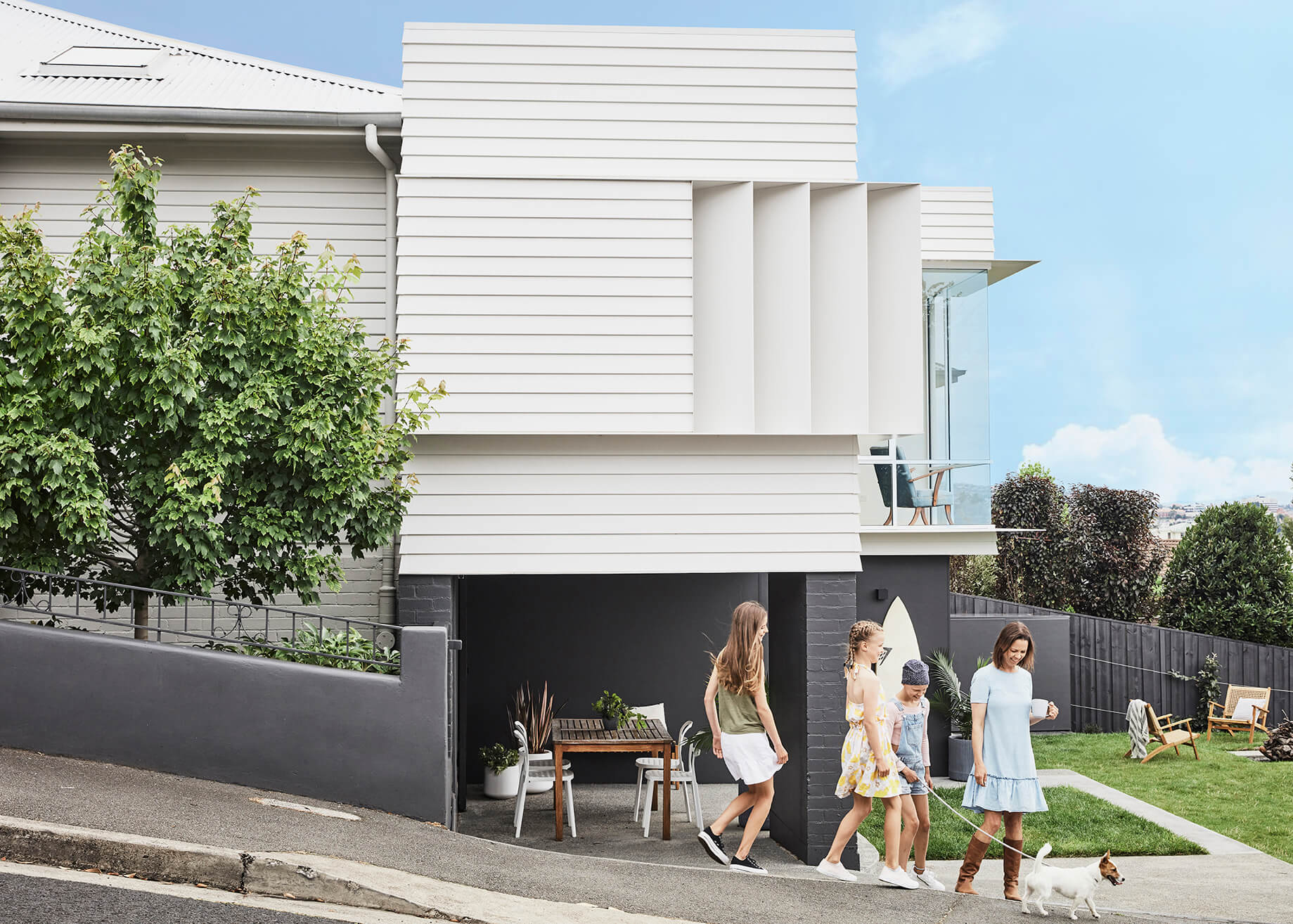
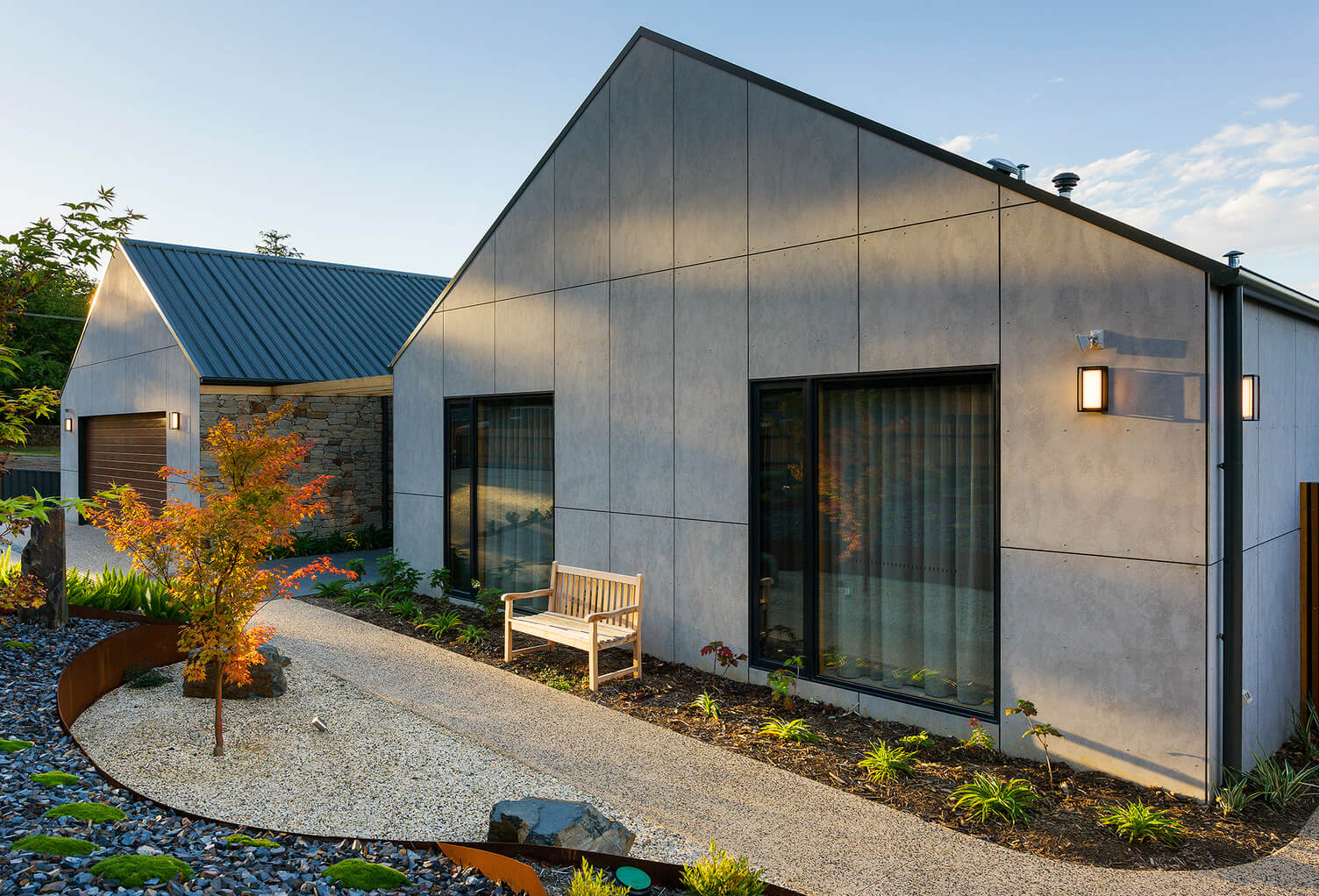
Fibre cement cladding FAQs
What is fibre cement cladding?
Fibre cement cladding gained popularity last century, particularly after Australian company, James Hardie Industries, developed the composition of fibre cement cladding products in the 1980’s. Advances in manufacturing techniques have led to improvements in fibre cement formulations, resulting in products with enhanced durability, weather resistance, and greater ease of installation. Newer products are more efficient, more environmentally friendly, and are produced in an increasingly wide array of colours and textures.
Why choose fibre cement cladding over other materials?
Modern fibre cement cladding is lightweight, long-lasting, and highly resistant to fire, moisture, and pests that destroy homes, like termites. Panels can be pre-cut and delivered to the installer or cut and installed on-site. Pre-finished and pre-primed options significantly cut installation time, and sheer panels easily fit into place requiring just one or two experienced tradies. What’s more, fibre cement cladding easily substitutes for less durable materials, with an extraordinary range of natural timber, stone, or textured finishes available in a variety of shades.
How do I maintain my fibre cement cladding to ensure longevity?
Make sure your fibre cement wall cladding is correctly installed by a suitably qualified professional, and that it is properly sealed with the right corner and window treatments as required. You should also have walls and joints checked occasionally for any structural damage. Follow washdown procedures for some products and maintain your cladding’s appearance by brushing away any accumulated dust or dirt. Painted fibre cement wall cladding will not require a new coat for over ten years, subject to local conditions. But, with proper installation and regular maintenance, the lifespan of your paint finish is significantly extended.

